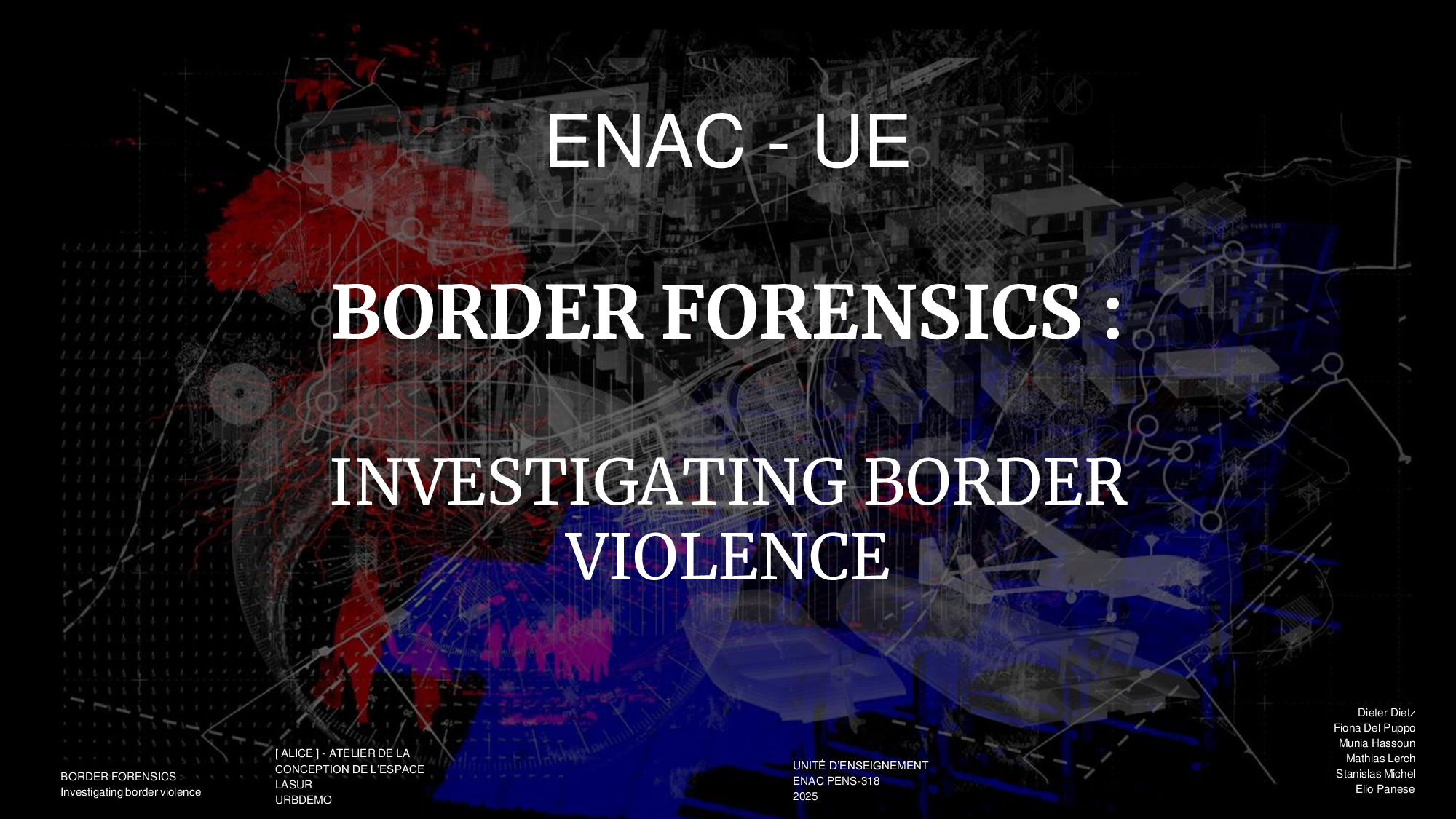
The course will introduce students to different forms of violence related to the existence of state borders and social boundaries. Grounded in the Swiss context, it will focus on the overview of transdisciplinary and multiscale investigative methods, from geostatistical analysis to (auto)ethnography, used to document and contest this violence.
The idyllic landscape of Switzerland is striated by multiple borders and social boundaries, which particularly affect asylum seekers as well as racialized citizens. This course will introduce students to scientific and innovative spatial methods developed by Forensic Architecture and the Swissbased agency Border Forensics allowing to document, contest and transform these forms of violence. In particular, we will explore the forms of harm that are inflicted on asylum seekers through the Swiss Asylum Dispositif (Panese 2022). The laws, administrative measures and bureaucratic practices that make up the Swiss asylum dispositif and are mobilised with the aim of selecting people and controlling migratory flux transport and translate borders within the State, "into the middle of political space" (Balibar 2004, 109), along with their "potential for violence" (Panese 2022, 18). While the violence perpetrated by the "borders within" the Swiss territory may be less spectacular than the large-scale deaths of migrants crossing the external borders of Europe, it nonetheless translates into social exclusion, as well as psychological and physical harm. As it will be explored during the semester, these “borders within” complexify the temporalities and embodied experiences of migration, embedded not only in one-off crossings of external borders but also endured in the long term in seemingly non-violent settings, in the mundane aspects of everyday life and in the most intimate spaces and realms of existence. We will further explore the ways in which the social boundary of race affects racialized people's experience of space, subjecting them to the constant threat of racial profiling and police violence. All in all, we will explore the broader theme of how borders and social boundaries materialize in urban environments.
The course will allow students to address a wide range of questions such as: How political termssuch as violence, authority, and border are understood in the context of the Swiss asylumdispositif? How can we understand, document and render visible violence in its many different guises? How does the violence of borders and social boundaries operate and how are geophysical environments harnessed within it? How can we navigate complex regimes of (in)visibility, in which deaths can be hidden but also spectacularized? How does the notion of dehumanization impact the institution's policies and practices, and how does it relate to the survival strategies adopted by asylum seekers in that space? What is the politics of different technologies and methods used to reconstruct cases of violence? How can spatial interventions articulate places of (in)visibility, resistance, coordination and memory? Can these interconnected places become places that question the very process of the city and the built environment? By exploring these questions, the course will equip students with the conceptual and methodological tools to navigate the complexities of research-based spatial practice.- Professor: Martí Bosch Padros
- Professor: Fiona Ines Del Puppo
- Professor: Dieter Dietz
- Professor: Nathalie Fanzy
- Professor: Munia Hassoun
- Professor: Stéphane Joost
- Professor: Mathias Lerch
- Professor: Stanislas Hugo Werner Michel
- Professor: Elio Panese
- Professor: Elio Panese
- Professor: Sanja Platisa
- Professor: Marie Trossat
